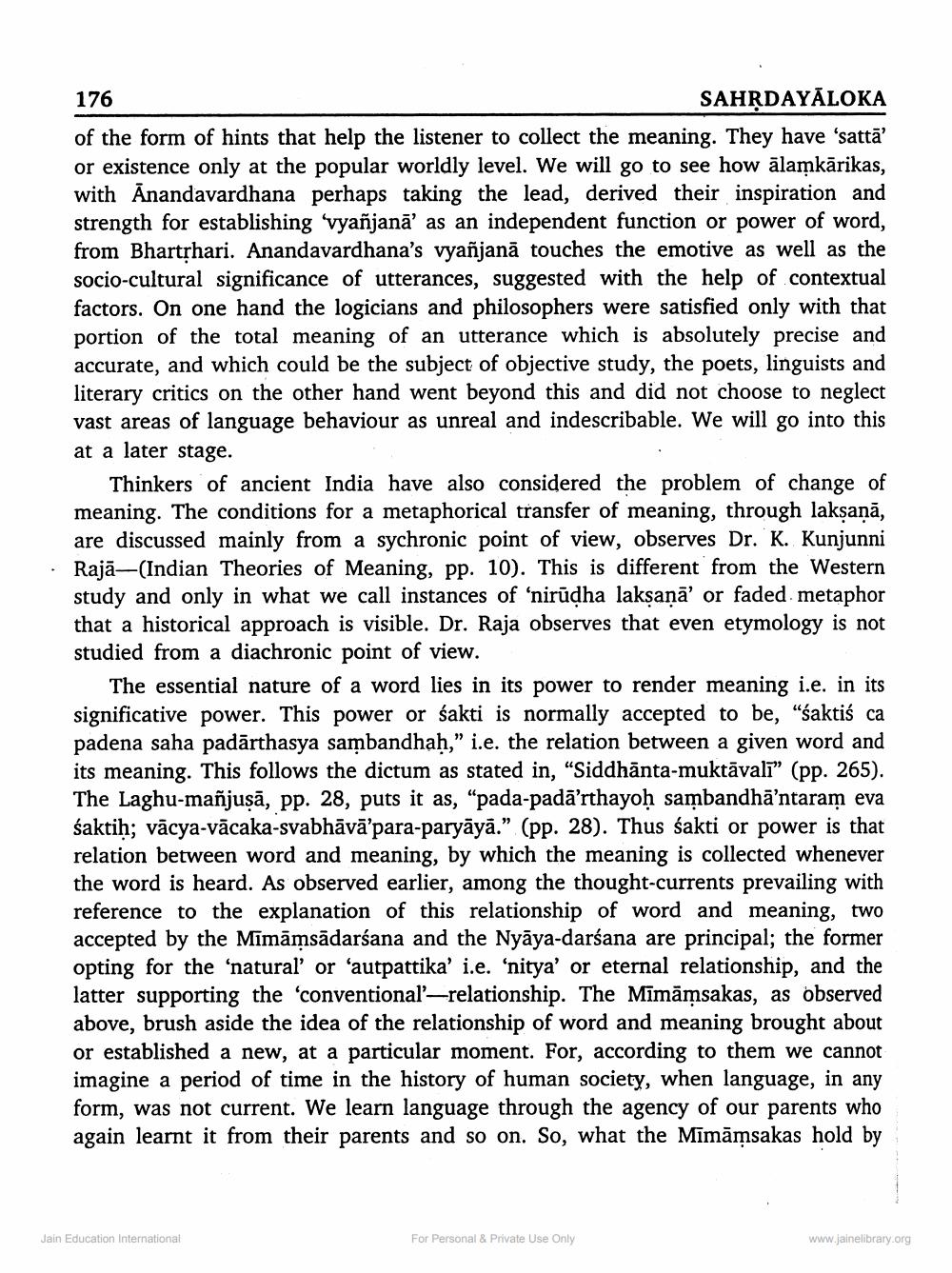________________
176
SAHĶDAYĀLOKA of the form of hints that help the listener to collect the meaning. They have 'sattā' or existence only at the popular worldly level. We will go to see how ālamkārikas, with Anandavardhana perhaps taking the lead, derived their inspiration and strength for establishing 'vyañjanā' as an independent function or power of word, from Bharthari. Anandavardhana's vyañjanā touches the emotive as well as the socio-cultural significance of utterances, suggested with the help of contextual factors. On one hand the logicians and philosophers were satisfied only with that portion of the total meaning of an utterance which is absolutely precise and accurate, and which could be the subject of objective study, the poets, linguists and literary critics on the other hand went beyond this and did not choose to neglect vast areas of language behaviour as unreal and indescribable. We will go into this at a later stage.
Thinkers of ancient India have also considered the problem of change of meaning. The conditions for a metaphorical transfer of meaning, through laksanā, are discussed mainly from a sychronic point of view, observes Dr. K. Kunjunni Rajā—(Indian Theories of Meaning, pp. 10). This is different from the Western study and only in what we call instances of 'nirudha laksaņā' or faded metaphor that a historical approach is visible. Dr. Raja observes that even etymology is not studied from a diachronic point of view.
The essential nature of a word lies in its power to render meaning i.e. in its significative power. This power or sakti is normally accepted to be, "Śaktiś ca padena saha padārthasya sambandhah," i.e. the relation between a given word and its meaning. This follows the dictum as stated in, “Siddhānta-muktāvali” (pp. 265). The Laghu-mañjusā, pp. 28, puts it as, “pada-padā’rthayoḥ sambandhā’ntaram eva Śaktih; vācya-vācaka-svabhāvā'para-paryāyā.” (pp. 28). Thus sakti or power is that relation between word and meaning, by which the meaning is collected whenever the word is heard. As observed earlier, among the thought-currents prevailing with reference to the explanation of this relationship of word and meaning, two accepted by the Mīmāmsādarśana and the Nyāya-darśana are principal; the former opting for the 'natural' or 'autpattika' i.e. 'nitya' or eternal relationship, and the latter supporting the 'conventional-relationship. The Mīmāmsakas, as observed above, brush aside the idea of the relationship of word and meaning brought about or established a new, at a particular moment. For, according to them we cannot imagine a period of time in the history of human society, when language, in any form, was not current. We learn language through the agency of our parents who again learnt it from their parents and so on. So, what the Mīmāmsakas hold by
Jain Education International
For Personal & Private Use Only
www.jainelibrary.org




